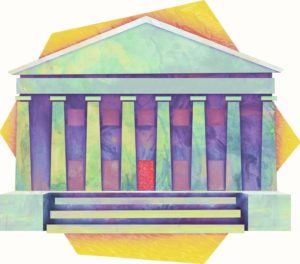In this lesson, students will explore the origins and evolution of the supremacy clause. How are conflicts between federal and state power resolved?

Most of these lessons are based on Annenberg Classroom videos. Teachers may contact info@annenbergclassroom.org to get the Teacher’s Key for the lesson plans. Teachers will also find lessons for teaching critical thinking skills.
70 resources available
